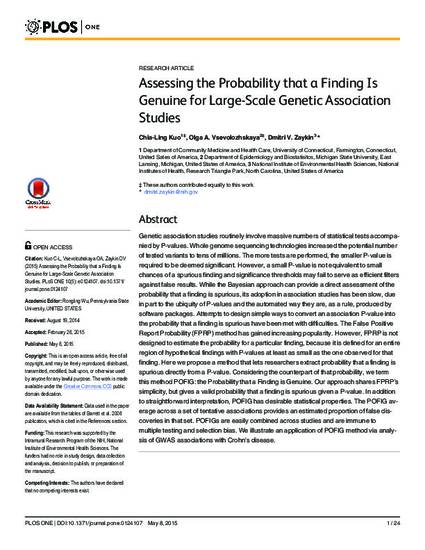
Genetic association studies routinely involve massive numbers of statistical tests accompanied by P-values. Whole genome sequencing technologies increased the potential number of tested variants to tens of millions. The more tests are performed, the smaller P-value is required to be deemed significant. However, a small P-value is not equivalent to small chances of a spurious finding and significance thresholds may fail to serve as efficient filters against false results. While the Bayesian approach can provide a direct assessment of the probability that a finding is spurious, its adoption in association studies has been slow, due in part to the ubiquity of P-values and the automated way they are, as a rule, produced by software packages. Attempts to design simple ways to convert an association P-value into the probability that a finding is spurious have been met with difficulties. The False Positive Report Probability (FPRP) method has gained increasing popularity. However, FPRP is not designed to estimate the probability for a particular finding, because it is defined for an entire region of hypothetical findings with P-values at least as small as the one observed for that finding. Here we propose a method that lets researchers extract probability that a finding is spurious directly from a P-value. Considering the counterpart of that probability, we term this method POFIG: the Probability that a Finding is Genuine. Our approach shares FPRP's simplicity, but gives a valid probability that a finding is spurious given a P-value. In addition to straightforward interpretation, POFIG has desirable statistical properties. The POFIG average across a set of tentative associations provides an estimated proportion of false discoveries in that set. POFIGs are easily combined across studies and are immune to multiple testing and selection bias. We illustrate an application of POFIG method via analysis of GWAS associations with Crohn's disease.
- Probability distribution,
- Statistical distribution,
- Replication studies,
- Simulation,
- Modeling,
- Test statistics,
- Genetic association studies
Available at: http://works.bepress.com/vsevolozhskaya/1/
